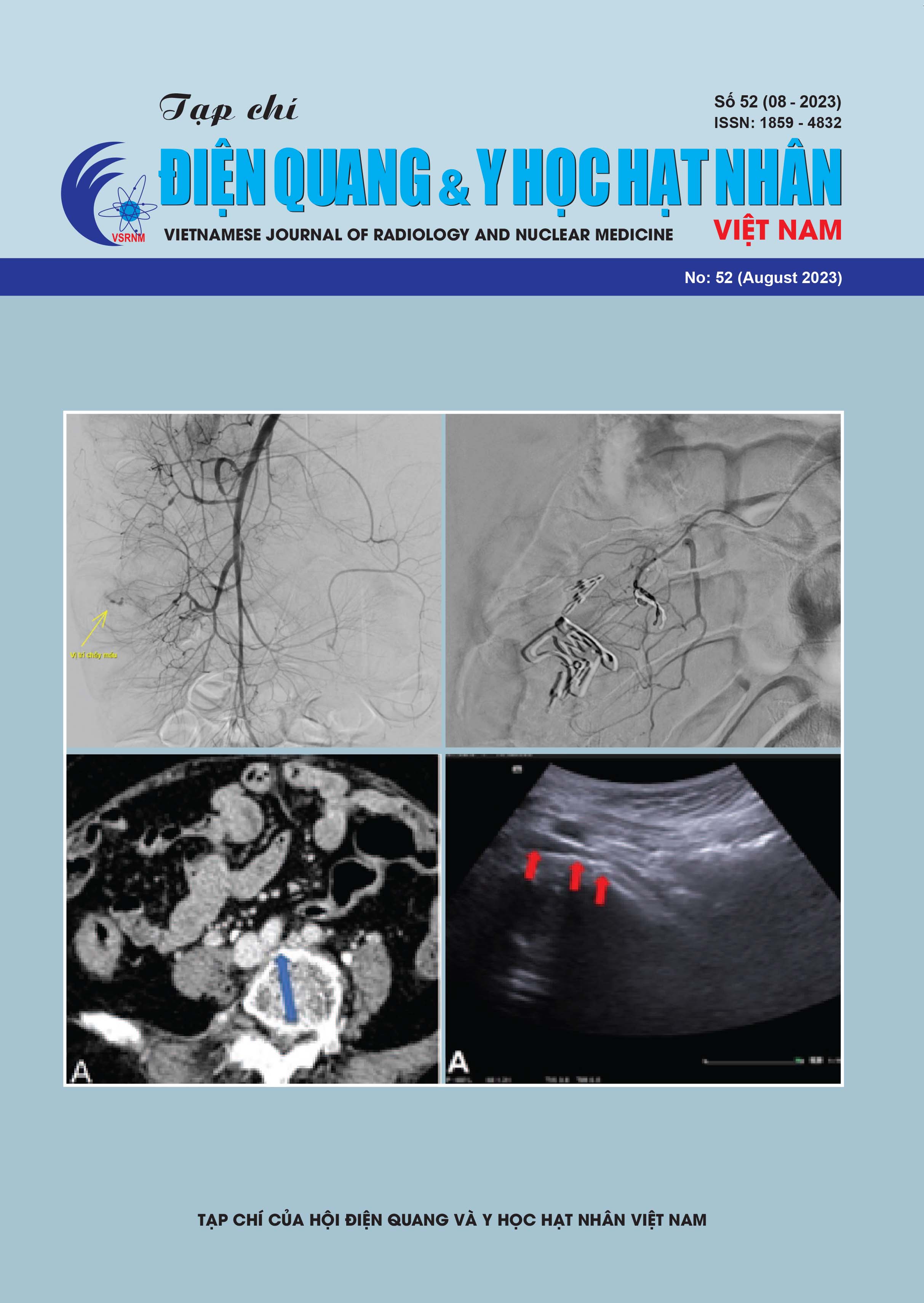Imaging characteristics of colorectal liver metastases on dynamic computed tomography
Main Article Content
Abstract
Background: Colorectal cancer is a common cancer that has a high morbidity and mortality rate, and the liver is the most frequent metastatic organ. Dynamic computed tomography (CT) can be used to diagnose colorectal liver metastases based on their imaging characteristics and enhancing patterns which are different from other liver lesions. Objective: To describe the imaging characteristics of colorectal liver metastases on dynamic CT.
Methods: A cross–sectional study was conducted on 39 colorectal cancer patients with pathologically proven liver metastases. All patients underwent triphasic CT. Other lesions sharing similar imaging characteristics were considered metastases. Patient demographic and CT findings were documented
Results: 39 patients and 92 lesions were included in the analysis. Liver metastases can be solitary (48.7%) or multiple (51.3%). Most of them are located in the right lobe (62%) more than the left lobe. Lesions less than 5 cm have the highest rate (80.5%). Liver metastases are often well–defined (54.4%) with non-lobulated borders (58.7%). Calcification is rare (5.4%). Compared to the surrounding liver parenchyma, colorectal liver metastases have a lower density in the pre-contrast phase (89.3%), and are also less enhanced in arterial and venous phases (93.5% and 98.9% gradually). Contrast-enhanced lesions are usually heterogeneously (91.3%). Rim enhancement at the peripheral area is often observed (78.2%). Of 51 lesions, it appears on both arterial and venous phases (55.4%). Central necrosis is about 41.3% of the total lesions and dominantly appears in lesions larger than 3 cm.
Conclusions: Imaging characteristics of the colorectal liver metastases mostly observed are the thin rim enhancement at the peripheral area, low density in the pre-contrast phase, less enhancement than the normal surrounding liver parenchyma on both arterial and venous phases, central necrosis in the large lesions, and heterogeneously enhanced pattern.
Article Details
Keywords
colorectal liver metastases, dynamic CT, imaging characteristics.
References
2. Siegel RL, Miller KD, Goding Sauer A, Fedewa SA, et al (2020). Colorectal cancer statistics, 2020. CA: a cancer journal for clinicians. 70(3):145-164 3. Tsili AC, Alexiou G, Naka C, Argyropoulou MI (2021). Imaging of colorectal cancer liver metastases using contrastenhanced US, multidetector CT, MRI, and FDG PET/CT: a meta-analysis. Acta radiologica (Stockholm, Sweden : 1987). 62(3):302-312
4. Nagakura S, Shirai Y, Hatakeyama K (2001). Computed tomographic features of colorectal carcinoma liver metastases predict posthepatectomy patient survival. Diseases of the colon and rectum. 44(8):1148-1154
5. Wigmore SJ, Madhavan K, Redhead DN, Currie EJ, et al (2000). Distribution of colorectal liver metastases in patients referred for hepatic resection. Cancer. 89(2):285-287
6. Chang HH, Leeper WR, Chan G, Quan D, et al (2012). Infarct-like necrosis: a distinct form of necrosis seen in colorectal carcinoma liver metastases treated with perioperative chemotherapy. The American journal of surgical pathology. 36(4):570-576
7. Kadiyoran C, Cizmecioglu HA, Cure E, Yildirim MA, et al (2019). Liver metastasis in colorectal cancer: evaluation of segmental distribution. Przeglad gastroenterologiczny. 14(3):188-192
8. Bùi Đức Hải (2013). Nghiên cứu hình ảnh chụp cắt lớp vi tính trong chẩn đoán ung thư gan thứ phát. Y học thực hành. 161-162
9. Nguyễn Phước Bảo Quân (2010). Nghiên cứu đặc điểm hình ảnh và giá trị của cắt lớp vi tính vòng xoắn 3 thì trong chẩn đoán một số ung thư gan thường gặp. Đại học Y Hà Nội.
10. Paulatto L, Dioguardi Burgio M, Sartoris R, Beaufrère A, et al (2020). Colorectal liver metastases: radiopathological correlation. Insights into imaging. 11(1):99
11. Nino-Murcia M, Olcott EW, Jeffrey RB, Jr., Lamm RL, et al (2000). Focal liver lesions: pattern-based classification scheme for enhancement at arterial phase CT. Radiology. 215(3):746-751
12. Wong NA, Neville LP (2007). Specificity of intra-acinar necrosis as a marker of colorectal liver metastasis. Histopathology. 51(5):725-727
13. Hale HL, Husband JE, Gossios K, Norman AR, et al (1998). CT of calcified liver metastases in colorectal carcinoma. Clinical radiology. 53(10):735-741
14. Nakai H, Arizono S, Isoda H, Togashi K (2019). Imaging Characteristics of Liver Metastases Overlooked at Contrast-Enhanced CT. AJR American journal of roentgenology. 212(4):782-787


